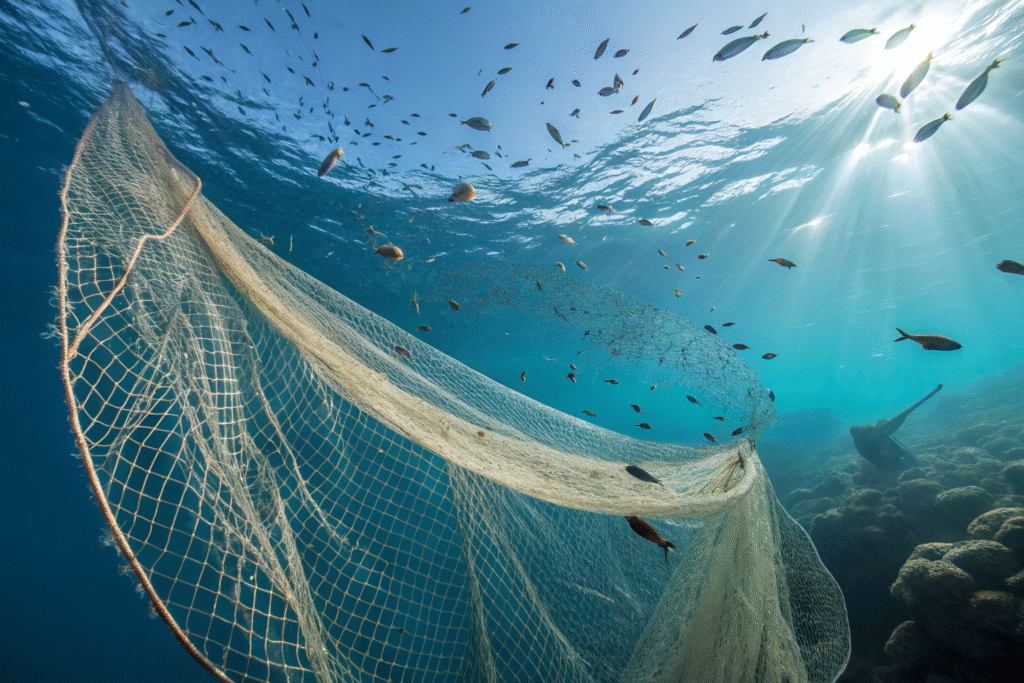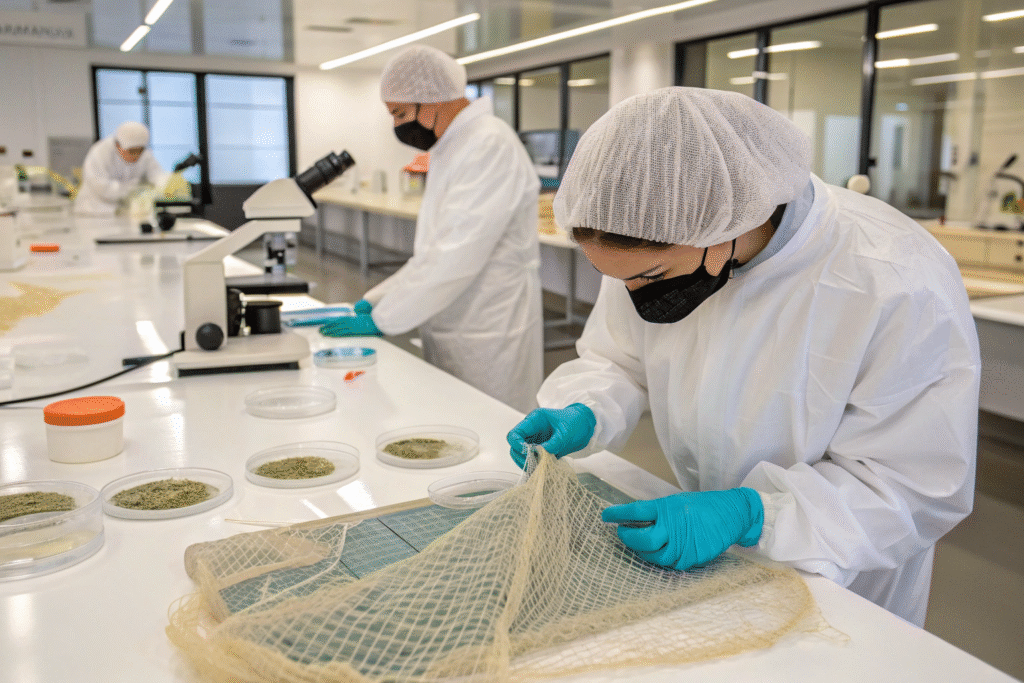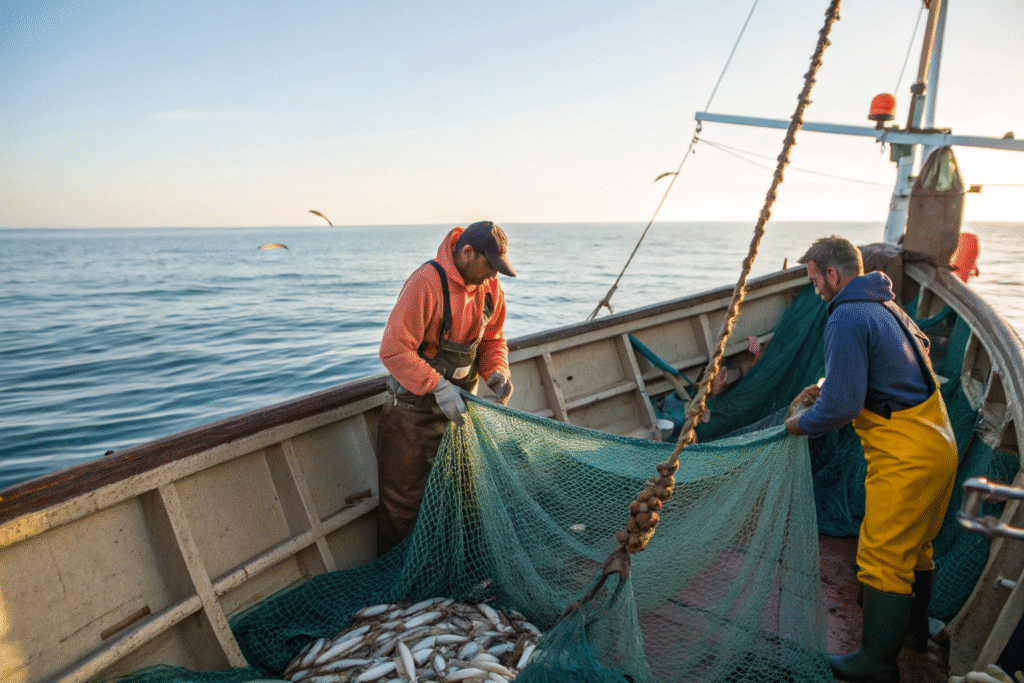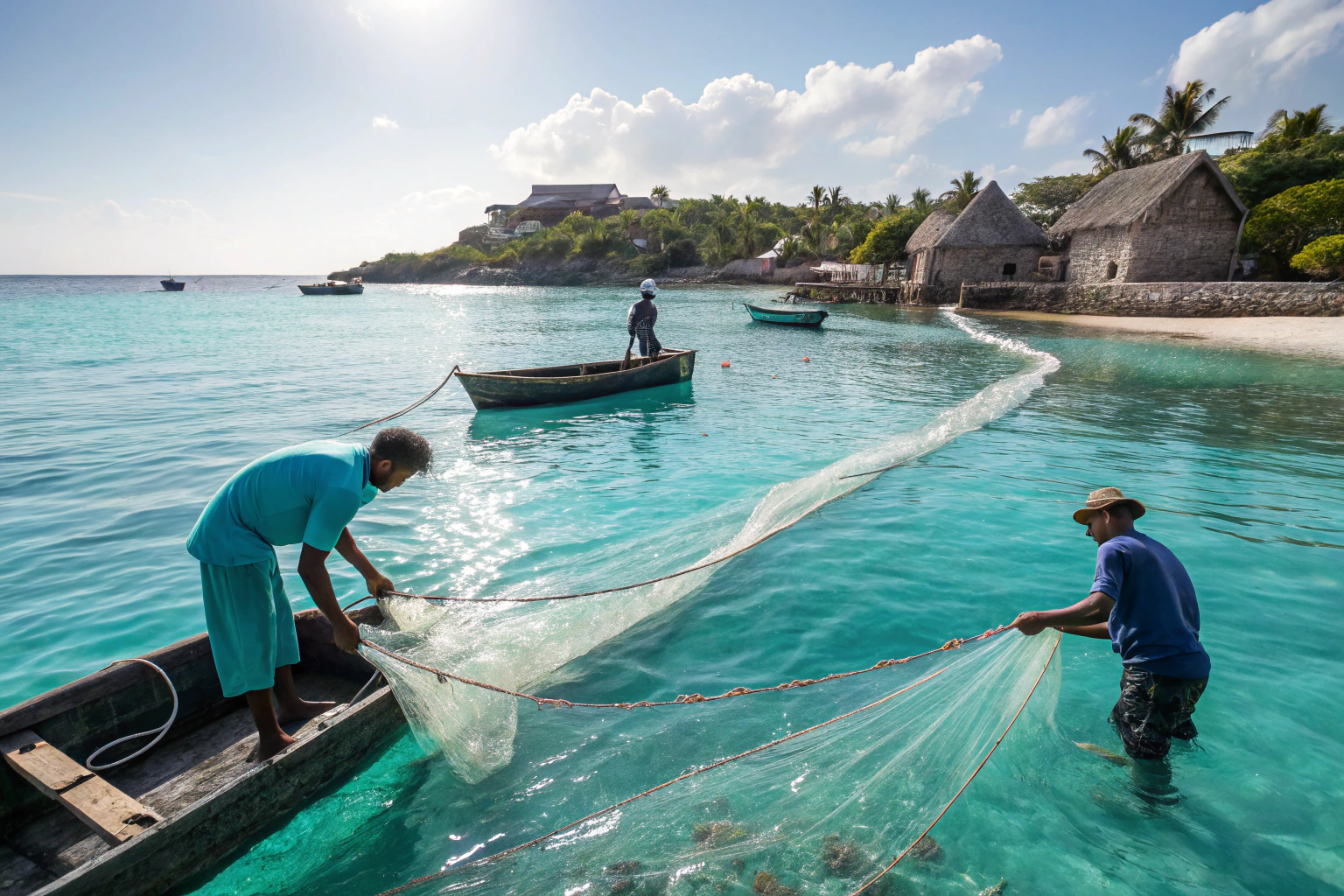The fishing industry has long relied on strong synthetic fibers such as nylon and polyethylene to make durable nets. But while these materials deliver strength and reliability, they create a huge environmental problem when lost at sea. Ghost nets can drift for decades, trapping marine life and polluting ecosystems. As global awareness of plastic waste grows, more buyers, suppliers, and policymakers are asking: what alternatives exist? Can biodegradable fishing net fabrics really combine durability with sustainability?
The latest generation of biodegradable fishing net fabrics proves that innovation is possible. From biopolymers that break down naturally in seawater to recycled nets turned into new textiles, the industry is shifting away from harmful synthetics toward materials that protect marine ecosystems.
This article explores the newest solutions in biodegradable and recycled fishing net fabrics. I will explain how they are made, how they perform, and why global brands, fishing companies, and policymakers are paying close attention.
Why Are Biodegradable Fishing Nets Important?
Biodegradable fishing nets are not just about fashioning a new type of fabric. They are a solution to one of the biggest threats to ocean ecosystems: ghost fishing. Every year, millions of tons of fishing gear are abandoned or lost at sea. Traditional nylon and polyethylene nets may persist for centuries, trapping fish, turtles, and seabirds. This problem demands urgent solutions.
Biodegradable fishing nets offer a way forward. They are engineered to break down naturally in seawater or composting environments, preventing long-term harm. By combining strength with planned degradation, they help balance the needs of fishermen with the needs of marine ecosystems.

When we dive deeper, we find that innovation in fishing nets involves both biodegradable polymers and recycled fishing net fabrics. Some solutions replace virgin petroleum-based plastics, while others transform discarded fishing gear into sustainable textiles for fashion and industry.
What Are Biodegradable Biopolymer Nets?
Biodegradable biopolymer nets are typically made from polymers like PBS (polybutylene succinate), PBAT (polybutylene adipate terephthalate), PLA (polylactic acid), or PHA (polyhydroxyalkanoates). These materials are designed to degrade under marine conditions.
For example, Biodolomer®Ocean is a new biopolymer blend that looks and feels like nylon but breaks down within 2–5 years in the ocean. Unlike nylon, it does not leave microplastics behind. Another project, the EU-funded SeaLive initiative, showed that PLA nets degrade 40 times faster than conventional nets. While nylon nets may last centuries, PLA-based nets disappear in about a decade at sea.
These innovations are still being tested in large-scale fisheries, but early results show strong potential. The challenge is balancing durability during fishing use with controlled biodegradability after disposal.
How Do Recycled Fishing Net Fabrics Work?
While some companies focus on biodegradable polymers, others focus on closing the loop by recycling old fishing nets. Abandoned nets are collected from ports, beaches, and fisheries, then cleaned and reprocessed into fibers.
One example is NetPlus® by Bureo, which transforms 100% recycled fishing nets into high-quality yarns used in clothing and outdoor gear. Another company, HuiLiang, produces certified recycled polyamide fabrics from marine waste.
These fabrics are not biodegradable, but they help solve the problem of ghost nets by recovering and reusing them. They are also popular with eco-conscious fashion brands looking for traceable, recycled textiles.
What Are the Most Promising Materials Today?
New biodegradable fishing net fabrics fall into a few categories. Each has its own advantages and trade-offs.
Biodegradable biopolymers like PBS, PBAT, and PLA are leading the way. They are compostable, marine-degradable, and versatile in applications. INZEA biopolymers from NUREL can be spun into nets, fishing lines, and floats, all of which break down under composting conditions.

Recycled polyamides from discarded fishing nets offer another path. They avoid virgin plastic production and keep waste out of the ocean. Brands that prioritize durability often choose recycled over biodegradable options.
Can PLA and PHA Nets Replace Nylon?
PLA and PHA are two of the most studied biodegradable polymers. PLA is made from corn or sugarcane, while PHA is produced by bacteria. Both are compostable and biodegradable. Tests have shown that PLA nets degrade 40× faster than nylon, while PHA offers even faster breakdown under certain marine conditions.
However, these nets are not as strong as nylon. Fishermen often worry about lifespan and breakage. Researchers are now blending PLA with fibers like Lyocell to improve performance, as seen in the PEsca Senza PLAstica project.
Are Recycled Fishing Nets Reliable for Fashion and Industry?
Yes. Recycled fishing nets are proving very reliable, especially in textiles. For example, YUANTEX and HSTTEX in Taiwan convert fishing nets into regenerated nylon. These fabrics are used in sportswear, swimwear, and outdoor equipment. The performance is nearly identical to virgin nylon, making them ideal for brands seeking durability with sustainability.
For the fashion industry, recycled fishing nets have become a marketing story as well. Brands like Patagonia and Adidas use NetPlus or ECONYL fabrics to highlight their eco-conscious choices.
How Do Biodegradable Nets Perform in Real Fishing?
For biodegradable nets to succeed, they must work in real-world fishing conditions. Nets need strength to hold large catches, resistance to saltwater, and flexibility for use at sea. Several projects are testing prototypes in European and Asian waters.
Early trials show mixed results. Some biodegradable nets hold up well, while others degrade too quickly or lose elasticity. That is why companies like Catchgreen and B4Plastics are working on controlled biodegradation—nets that remain durable during fishing but start to break down only if lost.

Do Biodegradable Nets Cost More?
Yes, currently they are more expensive than traditional nylon nets. PLA, PBS, and PHA production costs are higher than petroleum-based polymers. However, as production scales up, prices are expected to drop. Governments in Europe and Asia are also supporting subsidies and regulations to encourage adoption.
For fishing companies, the long-term savings may come from avoiding environmental fines and building brand reputation. In the future, as biodegradable technology matures, prices may become competitive.
Will Biodegradable Nets Replace Nylon in the Future?
It is likely that biodegradable nets will gradually replace nylon in certain fisheries, especially where regulations demand eco-friendly gear. However, nylon will not disappear soon. A hybrid approach—mixing biodegradable nets in some sectors and recycled nets in others—may be the most realistic path.
Already, scientific reviews highlight biodegradable and recycled composites as the future of fishing gear. The industry is moving toward circular systems where nothing is wasted.
Conclusion
Biodegradable fishing net fabrics represent one of the most exciting innovations in sustainable textiles today. From PBS/PBAT blends like Biodolomer®Ocean to PLA and PHA prototypes tested under EU programs, these materials show real promise. Alongside them, recycled fishing net fabrics like NetPlus and regenerated nylon offer a reliable solution for fashion, sportswear, and industrial use.
While challenges remain—cost, durability, and scaling production—the direction is clear. Fishing nets of the future will not harm our oceans for centuries. Instead, they will either biodegrade safely or be recycled into valuable textiles.
If you are a brand, trader, or manufacturer looking to explore sustainable fishing net fabrics or other eco-friendly textiles, I invite you to contact us at Shanghai Fumao. Our Business Director, Elaine, can help you source and develop custom biodegradable or recycled fabrics that meet global standards. Reach out to her at elaine@fumaoclothing.com to start co-creating the next generation of sustainable fabrics.










